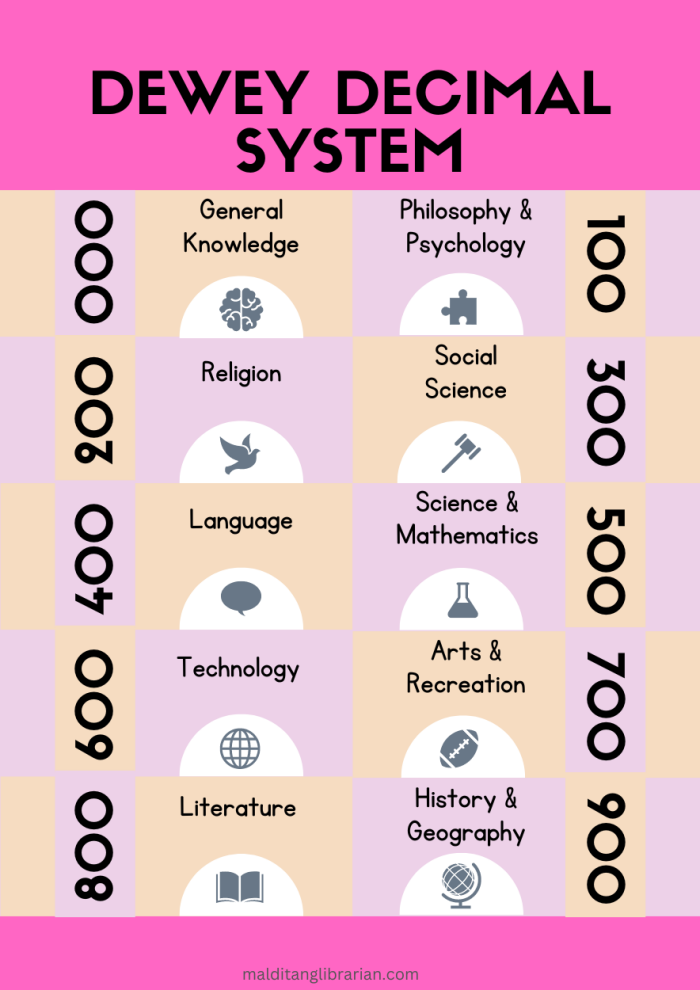
Libraries hold vast collections of information, a seemingly endless sea of knowledge waiting to be explored. But how do we navigate this ocean and find exactly what we're looking for? The Dewey Decimal Classification (DDC) a universal system that organizes library materials into specific categories.
Developed by Melvil Dewey in 1873, the DDC serves as a map, assigning unique numerical codes to classify books and other resources by subject. Here are its 10 fundamental classifications:
000-099: General Works, Computer Science & Information
This category encompasses general reference materials like encyclopedias, dictionaries, and bibliographies. It also includes books on computer science, information science, and library science.
100-199: Philosophy & Psychology
This section covers philosophical inquiries into the nature of knowledge, reality, and existence. It also delves into the human mind, behavior, and mental processes.
200-299: Religion
This classification explores various religious beliefs, practices, and institutions across the globe. It includes books on world religions, mythology, and religious history.
300-399: Social Sciences
This broad category encompasses diverse aspects of human society, including economics, politics, law, education, sociology, and anthropology.
500-599: Science & Mathematics
This section delves into the natural world, covering fields like physics, chemistry, biology, astronomy, and mathematics.
600-699: Technology
This classification focuses on the practical application of scientific knowledge, encompassing engineering, agriculture, medicine, and various crafts and industries.
700-799: The Arts & Recreation
This section explores the creative expression of humanity, including fine arts like painting and sculpture, performing arts like music and dance, and recreational activities like sports and games.
800-899: Literature
This category encompasses the vast realm of written works, including poetry, drama, fiction, non-fiction, and literature from various languages and cultures.
900-999: History & Geography
This section delves into the past, covering world history, regional histories, biographies, and geographical studies.
Subdivisions and Decimal Points
While the 10 main classes provide a broad framework, the DDC further subdivides each category with increasingly specific decimal points. For example, within the 500s (Science), 520 specifically focuses on astronomy, while 523.2 delves into the specific topic of the solar system.
This hierarchical structure allows for precise organization, enabling libraries to efficiently locate and shelve resources. It also aids researchers and patrons in navigating specific areas within a vast knowledge base.
The DDC is evolving
Over its 150-year history, the DDC has continuously adapted to reflect the evolving landscape of knowledge. New technologies and emerging fields necessitate revisions and additions to the system. This ensures its continued relevance in organizing the ever-expanding body of information available in libraries.
The Dewey Decimal Classification stands as a testament to human ingenuity in organizing knowledge. Its 10 fundamental categories and detailed subdivisions provide a universal language for libraries worldwide, making information readily accessible to users. As we continue to explore the vast ocean of knowledge, the DDC remains an invaluable tool, guiding us through the ever-expanding sea of information.








0 Comments